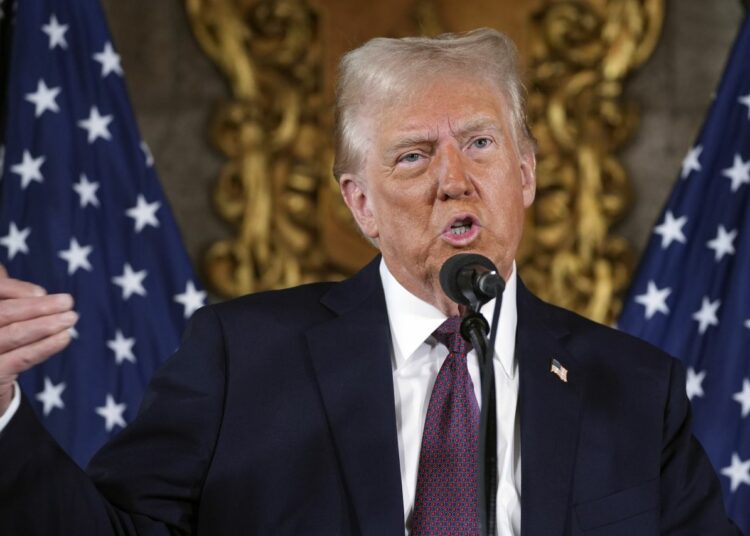United States President Donald Trump on Saturday announced a sweeping new 30 per cent tariffs on imports from Mexico and the European Union, significantly raising tensions with two of the United States’ largest trading partners.
The tariffs, set to take effect August 1, were revealed in formal letters on Trump’s Truth Social platform.
He cited Mexico’s failure to sufficiently curb the flow of illicit drugs into the U.S. and a persistent trade imbalance with the EU as justification for the measures.
The European Union swiftly condemned the move, warning that the tariffs would disrupt critical transatlantic supply chains.
However, EU officials maintained their commitment to ongoing trade negotiations with Washington before the deadline.
Since returning to the office in January, Trump has reignited his aggressive tariff strategy, targeting allies and rivals. The measures have rattled financial markets and raised concerns about a possible global economic slowdown.
Despite promising a wave of new trade agreements, the administration has so far only finalised deals with Britain and Vietnam, and temporarily reduced some reciprocal tariffs with China.
Pressure is mounting for the White House to deliver more concrete results.
The new tariffs on Mexican goods significantly escalated from the 25 per cent duties imposed earlier this year. However, products covered under the US-Mexico-Canada Agreement (USMCA) remain exempt.
“Mexico has been helping me secure the border, BUT what Mexico has done is not enough,” Trump wrote in his letter to Mexican President Claudia Sheinbaum.
“Starting August 1, 2025, we will charge Mexico a tariff of 30% on Mexican products sent into the United States.”
The EU is facing a similar hike. The 30 per cent tariff now proposed is a steep increase from the 20 per cent rate announced in April. Brussels responded with strong criticism while signaling readiness for a deal.
“Imposing 30 percent tariffs on EU exports would disrupt essential transatlantic supply chains, to the detriment of businesses, consumers and patients on both sides of the Atlantic,” European Commission President Ursula von der Leyen said in a statement.
“We remain ready to continue working towards an agreement by August 1. At the same time, we will take all necessary steps to safeguard EU interests, including adopting proportionate countermeasures if required,” she added.
Starting this week, the EU and other nations were initially scheduled to see tariffs rise from a baseline of 10 per cent.
Trump’s latest move delayed the deadline to August 1, giving negotiators more time to reach deals.
Meanwhile, the White House has sent updated tariff letters to more than 20 countries, including a 35 per cent levy for Canada.
However, Canadian goods covered by USMCA are expected to remain exempt.
Brussels previously signalled its willingness to strike a deal to avoid reinstating suspended 20 per cent tariffs. It also has a €21 billion package of retaliatory duties on U.S. goods ready to activate if talks collapse. Those countermeasures, triggered by earlier U.S. tariffs on steel and aluminium, are currently on hold until July 14.
“This latest threat shows the EU is in the same zone of uncertainty as nearly every other country facing U.S. tariffs,” said Josh Lipsky, Director of the Atlantic Council’s GeoEconomics Center.
“It’s one of the most precarious moments in the trade war so far.”
We’ve got the edge. Get real-time reports, breaking scoops, and exclusive angles delivered straight to your phone. Don’t settle for stale news. Join LEADERSHIP NEWS on WhatsApp for 24/7 updates →
Join Our WhatsApp Channel










